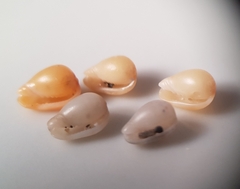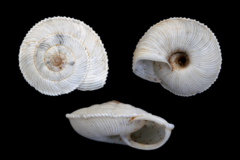Tusk shells
Scaphopoda
Mollusca Scaphopoda
The Scaphopoda, commonly known as tusk shells or escafópodos in Spanish, are a fascinating class of marine mollusks found in the waters of the Comunidad Valenciana. These unique creatures are easily recognized by their elongated, tubular shells that taper at both ends, resembling tiny elephant tusks.
- Habitat: Scaphopods inhabit sandy or muddy substrates on the ocean floor, usually at depths ranging from shallow waters to several thousand meters. In the Comunidad Valenciana, they can often be found in coastal regions and the Mediterranean Sea.
- Physical Characteristics: The scaphopod shell is conical with openings at both ends. The head and foot of the animal can retract entirely into the shell, providing protection. Their body shape allows them to burrow efficiently into the sediment.
- Feeding: These mollusks are detritivores, primarily feeding on microscopic organisms like foraminifera and other small particles in the sediment. They use their specialized feeding appendages, called captacula, to capture food.
- Reproduction: Scaphopods have separate sexes and reproduce by releasing eggs and sperm into the water, where fertilization occurs externally.
- Importance: Though not as well-known as other mollusks like bivalves or gastropods, scaphopods play a crucial role in the marine ecosystem as part of the benthic community.
Despite their small size and often overlooked presence, Scaphopods contribute significantly to the biodiversity of the marine environments in the Comunidad Valenciana.







